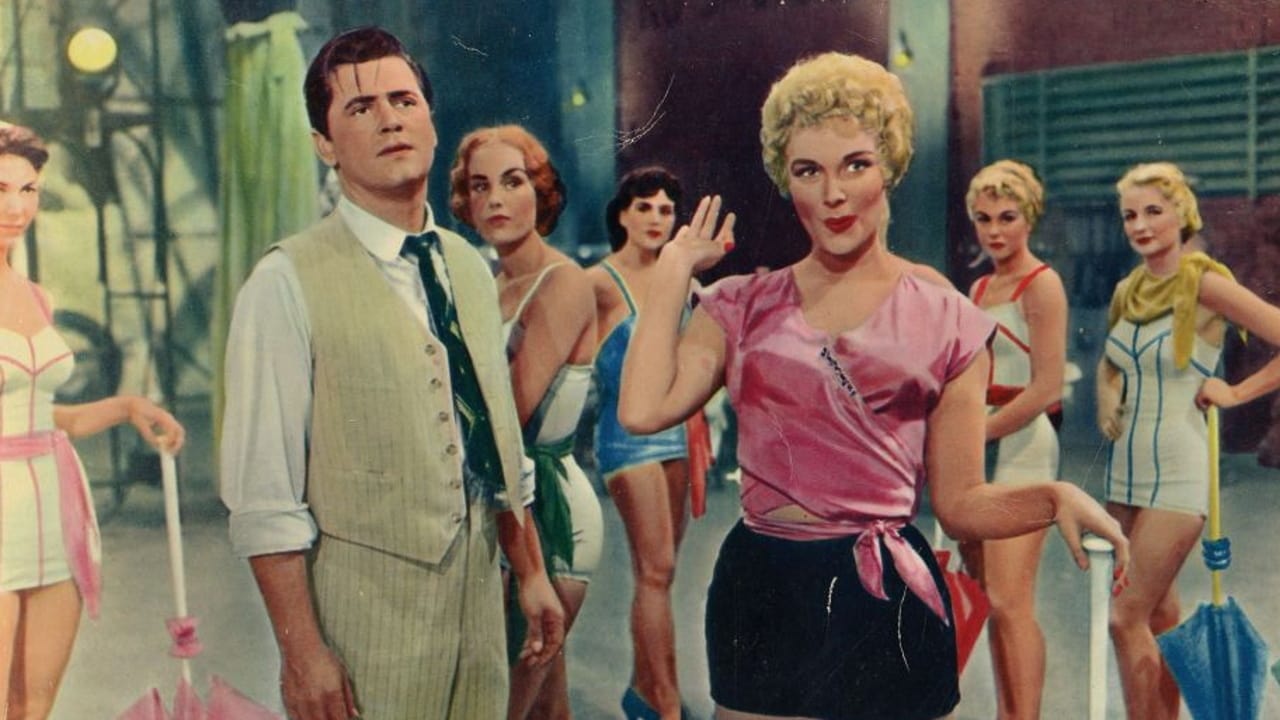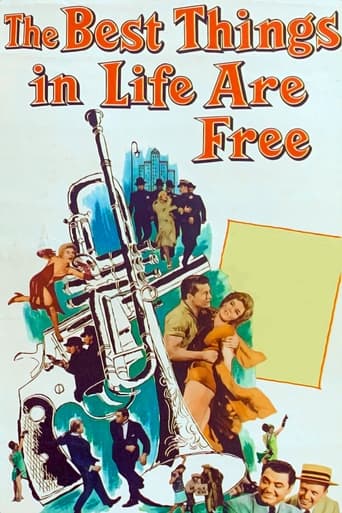

What a waste of my time!!!
... View MoreGood start, but then it gets ruined
... View MoreExcellent, a Must See
... View MoreAm I Missing Something?
... View MoreI have no idea how accurate this bio-pic is about the musical writing team of Lew Brown (Ernest Borgnine), Buddy De Silva (Gordon MacRae) and Ray Henderson (Dan Dailey) is, I have no idea as information about these guys' personal lives is scant on the internet. However, I strongly believe it's mostly fiction because that was the norm for films like this in Hollywood during this time. Besides, I find it very hard to believe Lew Brown could be this angry all the time! He did die from a heart attack...so who knows? Not surprisingly, the film only focuses on a small portion of their lives--from the time they teamed up in the 1920s through their time in Hollywood and Broadway.Much of the film is your typical 1950s musical--with some incredibly irrelevant and artsy dance numbers that are dream sequences (sort of like shorter versions of the HUGE one in "An American in Paris") and some traditional song/dance numbers. In between, there is story...but often this takes a back seat to the songs.Did I like it? Not much. It's reasonably well made and the trio wrote some very familiar tunes that are sometimes enjoyable. But Borgnine's one-note performance wasn't enjoyable and the other characters seemed underdeveloped...though not as badly as Borgnine's. MacRae had a nice voice and was a heel. Dailey played the piano and was bland. I really wish they'd eliminated a few songs and focused much more on the story...but that is personal taste and the 1950s musicals often were more music than story. Compared to these other musicals, this one is just okay...and the Jolson sequences are, not surprisingly, dated. Seeing a guy who's obviously not Jolson and hiding it by ALWAYS having him in black-face was kind of silly...and tacky.
... View MoreI thought the chemistry among the three leads - Gordon McRae as Buddy De Sylva, Dan Dailey as Ray Henderson, and Ernest Borgnine as Lew Brown - was absolutely perfect even if not necessarily true. Probably the hardest thing to take at first is the excessively caustic nature of Borgnine's portrayal of Lew Brown until you get to know a little more about Lew, his background, and his friends and then things begin to make sense. There's a good contrast of personalities here - De Sylva civilized but selfish versus the street-wise loud and rude Brown who'd put it all on the line for a friend. Henderson's gentle family man play-for-keeps style versus De Sylva's flavor-of-the-month attitude towards women. I don't know if any of this was true, but as cinema I liked it.Knowing something about the early talkie musicals and the composers behind them, some things did bother me. At one point the film has the three going out to Hollywood to work on the 1929 early talkie musical "Sunnyside Up". This was largely a homespun little film in the tradition of the early Fox musicals with even a harpsichord number included. Instead, what we see on the set is an elaborate fan-dance like number with a man in a tuxedo singing "If I Had a Talking Picture of You" accompanied by dancing girls with long red boas. This is not how I remember Charles Farrell singing this one. In fact, if there is one big complaint I have is that the songs are pure 20's but the choreography and tempo of the numbers are like something out of an MGM musical ballet with Gene Kelly that would have been popular at the time of the film's release - 1956.The key to enjoying this film is to focus on the beautiful music, good performances, and the pleasant nature of the story. Do that and I think you'll like it. I don't think this was ever intended to be a serious biopic.
... View MoreWorking-stiff family man Ray Henderson, a piano player who dabbles in songwriting, meets struggling composers Buddy De Sylva and Lew Brown in 1920s Atlantic City; their musical partnership, formed by chance, evolves into a successful team which reaches the heights of Broadway and Hollywood. Biography of colorful tunesmith-trio who had hits with Al Jolson's "Sonny Boy" and the novelty numbers "Button Up Your Overcoat" and "Sunny Side Up" is nearly run into the ground by meandering musical routines which simply are not up to previous 20th Century-Fox standards. The casting also seems off: as the mercurial Brown, it isn't long before Ernest Borgnine loses his proverbial temper, yet his transitions from angry brute to dancing maestro have no resonance (the character never takes shape); Sheree North is the songbird who seems bound by faith to the three guys, though it's obvious her singing and dancing isn't as special as it's meant to be. As peace-keeper Henderson, Dan Dailey looks a bit sheepish at times (particularly in the "Overcoat" number), though Gordon MacRae as the overtly-ambitious De Sylva is nicely attuned to this milieu (and, for once, MacRae's baritone isn't over-worked). The production is glossy but lacks pizazz, while the uncertain path post-Hollywood isn't used to give the story an arc, only to point us to the formulaic happy ending. ** from ****
... View MoreMichael Curtiz's 1956 film "The Best Things in Life are Free" was frequently shown on Chicago television in the 1960s. I had not seen the film until it was recently broadcast on the Fox Movie Channel. Unfortunately, it was not a letterboxed print, so it was very difficult to determine the film's merits as it had the left and right margins entirely cut off. That aside, I think it was an attempt at a darkish musical with Curtiz touches and this was reflected in the script.The film is entirely done on soundstages, no exteriors at all, so it feels kind of clunky, as many of the early Cinemascope films were as well.I liked the actors, especially the wonderful actor and dancer Sheree North. Her best number, "Black Bottom", was badly impacted by the lack of a letterboxed print. She was very fortunate to be partnered by one of George Balanchine's finest male dancers, Jacques d'Amboise, photographed here in his dancing prime. Lucky Sheree North! Dancer (and future partner of Fred Astaire) Barrie Chase is also featured in the film.I was amused by Ernest Borgnine's dancing, singing and acting, puzzled by Dan Dailey's lack of dancing, and liked Gordon MacRae, who played Buddy daSylva. I liked the film, and hope to see a letterboxed print in the future.
... View More